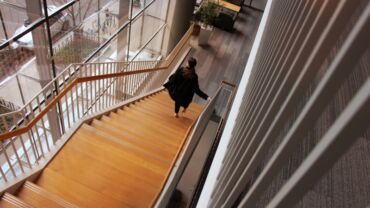Age bias, or ageism, is a largely neglected component of the diversity, equity, and inclusion decision-making dynamic that impacts both younger and older workers
More than three-quarters (78%) of older workers said they saw or experienced age discrimination in the workplace in 2020, up from 61% in 2018, according to a recent survey conducted by the AARP. This is likely because of the high unemployment rate caused in large part by the global pandemic and ensuing lockdowns earlier in the year.
The COVID-19 pandemic is not to blame for ageism beliefs and behaviors, of course, but in some ways, it heightened the problem and brought more attention to ageism. Indeed, age bias was largely neglected previously as an integral component of the diversity, equity, and inclusion (DEI) decision-making dynamic. What most organizations and individuals don’t understand about ageism is that it’s not just about older generations or people over 50, 60, or 70.
Ageism impacts younger workers as well as older ones. It may show up in what seem to some as arbitrary comments; for example, referring to early-career professionals as “kids” or “youngsters” or seasoned colleagues as “geezers” or even “seniors” without referring to their level of authority. It also manifests in stereotypical beliefs, such as those about older people not being tech savvy or younger workers being entitled.
Age is not static, and bias can — and eventually will — affect people at any age. And it’s important for reaching DEI solutions to recognize the intersectionality between generations, age and all other aspects of diversity and inclusion. Indeed, the various generations may view diversity issues in very different ways that are more linked to their formative influences and experiences unless they are confronted with or seek out experiences of diverse people.
Intergenerational collaboration is key
Collaboration across generations — something that I have named as collaborageismTM — is needed to end age diversity biases and the culture wars that surround them. The heart of this term is two-pronged: all ages and generations can fight ageism together; and engage in multigenerational collaboration, which entails cross-generational dialogue both to get to know colleagues on a personal level and to solve work challenges within teams.
A key step for organizations in institutionalizing collaborageism is to make cross-generational collaboration part of their core values and hire for these values and attributes. Human performance skills — such as active listening skills, demonstrating empathy, agility, and curiosity — can propel multigenerational collaboration forward. At the core of interpersonal connection is trust. Enhance trust by bringing transparency to the unwritten rules related to ageism to give all a sense of what behaviors are valued and those that make one successful within the organization.
In addition, organizations must make conversations a primary component of their culture through a multipronged strategy. In order to motivate people from different generations to share their perspectives proactively, it’s crucial to establish psychological safety, which is the belief that one won’t be punished for speaking up with ideas, questions, concerns, or by making mistakes. It also gives multigenerational teams the experience of learning from and teaching others.
Age is not static, and bias can — and eventually will — affect people at any age. And it’s important for reaching DEI solutions to recognize the intersectionality between generations, age and all other aspects of diversity and inclusion.
Another key ingredient is to have leaders model proactive outreach to existing team members from different generations, especially to early career employees to better demonstrate that their perspectives are valued. Cascading this approach encourages the multiplier effect of supervisors and those responsible for teams to do the same.
A hybrid working environment may make collaborageism trickier — or provide a greater opportunity for culture change. Mixing generations within meetings with some people in the office in person and others on video requires everyone to adapt and perhaps re-learn how to conduct themselves after working remotely full time for the past 18 months. Video platforms that have break-out room functionality create multiple opportunities for these one-on-one connections to occur. In addition, more intentionality in a hybrid work environment will test the agility of leaders and managers in particular, until it becomes in-grained as part of their leadership skill set.
Where do we start?
To begin this process, organizations first need to collect data. They should conduct exit interviews of all personnel who leave, both professionals and staff. This is as important for age as it is for race, gender, and other diversity factors. To address the age diversity challenges and avoid them before they appear, encourage and make time for cross-generational conversation toward understanding each other and bridging different perspectives, paving the way toward harmony, collaboration, and feelings of belonging.
An experienced facilitator should lead periodic cross-generational discussions with specific, relevant topics. Conversations could originate with affinity groups, such as employee resource groups, in organizations that have them. All of these discussions should take place in an environment and culture of psychological safety to avoid fears of punishment for expressing personal views. This should also allow for calling out, respectfully, sensitive language and other micro-aggressions. Be sure to encourage people of all generations to speak up and be heard, especially Millennials and Gen Z, and gauge their feelings of age bias against them, which tend to be downplayed relative to bias against older generations.
By using these steps as part of a DEI strategy, the adage “Ageism is the only acceptable bias left,” might finally be something of the past as organizations truly create a place where everyone feels they belong.







